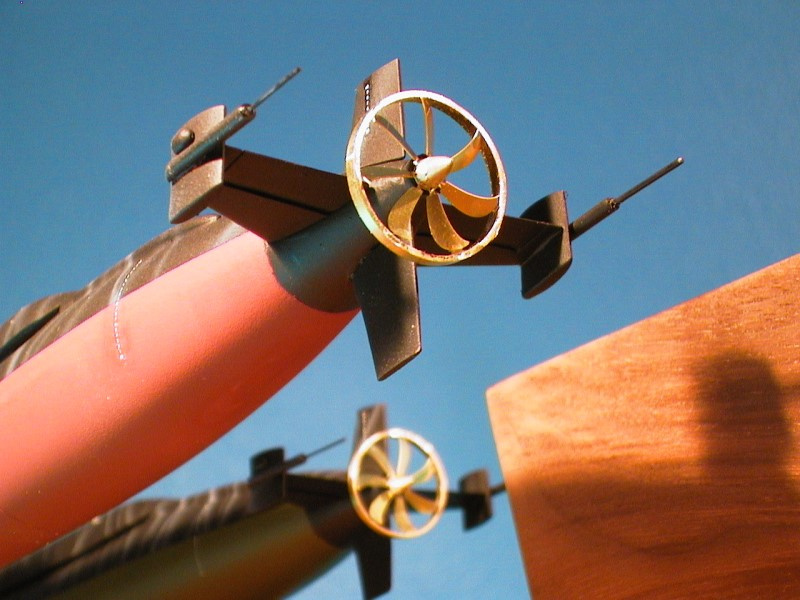Hi Peter, like your build, i am from norway, my engles is bad, sorry. I was thinking about your prop. My idea is to put a ring on the prop. Not a duct.This has several benefits. I can absolutly nothing about props, but i read that alu prop has bigger “slip” because it is soft, 2 cavitasjon,3 some safty less than fix duct more than nothing, less parts. Maybe more. Anyway just some ideas, Please tell me what i am missig, i am learning. Love your work. se the picture.
Regards Aslak
Peter, I see from the pic and video that your front wing looks to be between your feet. On both my kite foil and the e-foil I am helping test my rear foot is in front of the main wing.
Mike
Hey Peter, could you specify your parts list? I would Love to recreate your project
Great layout Peter, we have been working on a similar setup but with smaller ducted prop for safety reasons, but I think you nailed it that the fuselage should be the housing for motor.
Hey @Fancyfoam, I know that many are creating stability with negative angle of the rear foil, but this creates drag that I don’t want to have at higher speeds. So my center of gravity is slightly in front of the main foil and thats enough for me. I go even little further, my rear wing creates lift in higher speeds, so the angle of attack is decreasing with increase of speed, and the system plains itself. To reach >20 knots, this is quite uselfull, to not waist too much energy. Stability an efficiency is always a little conflict 
@Felixeik I’ll try to prepare a list next time.
Thanks @VeFoil, your long torpedo like housing could easily be used to replase the fuselage 
@Peter I plan to use a kite board about the same size and volume as your’s, but I was wondering if it as enough volume to float with you, the foil, the battery pack, etc on the starting phase when you have no speed. I ask as almost all the others are using much thicker boards with an important volume. Thanks!
Hey,
the board has only 20liters, so it’s floating by its own, but not at all with somebody on it.
You would need to lay down until you have a certain speed (~8knots) and then surfing is like a wake board ing. You can then lean a little back and start flying. In my opinion it’s lots of fun, but you will get wet and you will need some trials until you manage it 
Thanks it helped me a lot understanding how it will work with such a low volume board! 
Love your build! What do you think about a catamaran style board?
@MaxMaker , just a thought, why not just a V shape, more volume in center, better for mast assembly and integrated box 
I could do. But will that not cause more drag?
You are going to fly, not be on the water. The board shape has little impact (apart from air resistance) 
Hi @MaxMaker, Yes more drag with V shape vs flat, i was just thinking V shape vs catamaran shape that you was asking of.
Think area, more area more drag(rule of thumb).
I think flat shape is best, because less drag (small motor), more stable at no speed, easy to mount mast…
Good question tho 
I know, thats why I want to optimize the hull for low drag and not agility like a normal board.
@MaxMaker The optimize hull for low drag is flat hull. I like your thinking, you was asking yourself “what is the optimize hull for our use”. Or i may misunderstand you? Nice foil you got tho 
Exactly. Our use is: Go straight for 10 meters with as little drag as possible.
Yes, for starters that’s true. Once we get into high performance electric foiling and people carve tight high speed turns, we may want to think about these champfered bottom rails again which we have on the kite race boards today. Allows to deal better with water (chop) contact during hard upwind (not a issue here) and also helps on tight turns.
Hi Peter,
mit Zufall gestern auf diesen Blog gekommen.
Wir sind an Deinem Antrieb interessiert,
Grüße
achim@jetbuster.com
Hi Peter,
I’ve burnt a couple ESC’s on my board due to water systems leaking or overheating and am considering switching to a peltier system for cooling. My board incorporates a large aluminum plate so I feel it will work well. What was the volt and amps for the Peltier to work efficiently for your runtime?
